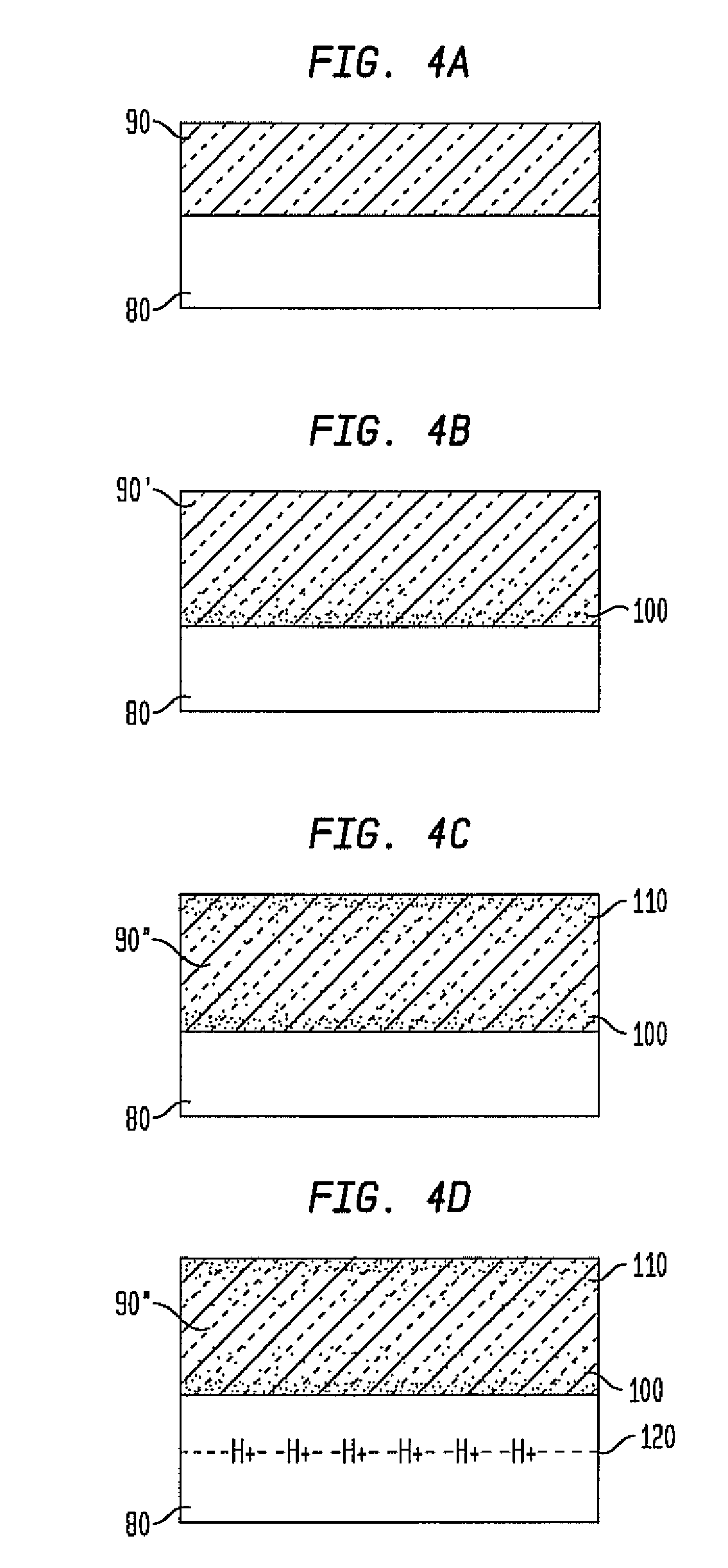Semiconductor-on-insulator (SOI) structures including gradient nitrided buried oxide (BOX)
a technology of buried oxide and semiconductor devices, applied in the field of semiconductor devices, can solve the problems of narrow width effect, impact on the threshold voltage of semiconductor devices, and the impact of boron migration and segregation may be even more sever
- Summary
- Abstract
- Description
- Claims
- Application Information
AI Technical Summary
Benefits of technology
Problems solved by technology
Method used
Image
Examples
first embodiment
[0032]FIG. 4A to FIG. 4F show a series of schematic cross-sectional diagrams illustrating the results of progressive stages in fabricating a semiconductor-on-insulator (SOI) structure in accordance with an embodiment of the invention. This embodiment of the invention comprises the invention.
[0033]FIG. 4A shows a semiconductor substrate 80. A buried oxide (BOX) layer 90 is located upon the semiconductor substrate 80.
[0034]The semiconductor substrate 80 may comprise any of several semiconductor materials. Non-limiting examples include silicon, germanium, silicon-germanium alloy, silicon carbide, silicon-germanium carbide alloy and compound semiconductor materials. Non-limiting examples of compound semiconductor materials include gallium arsenide, indium arsenide and indium phosphide semiconductor materials. Typically, the semiconductor substrate 80 comprises a silicon or silicon-germanium alloy semiconductor material that has a thickness from about 1 to about 3 mm.
[0035]The buried oxi...
second embodiment
[0048]FIG. 5A and FIG. 5B show a pair of schematic cross-sectional diagrams illustrating the results of progressive stages in fabricating a semiconductor-on-insulator (SOI) structure in accordance with another embodiment of the invention. This other embodiment of the invention comprises the invention.
[0049]FIG. 5A shows a schematic cross-sectional diagram of a semiconductor-on-insulator (SOI) structure generally related to the first embodiment. The semiconductor-on-insulator (SOI) structure in accordance with the second embodiment results from further processing of the semiconductor-on-insulator (SOI) structure of FIG. 4C within the first embodiment.
[0050]The semiconductor-on-insulator (SOI) structure of the second embodiment that is illustrated in FIG. 5A comprises, in a first instance, the semiconductor substrate 80 that comprises a base semiconductor substrate. The buried oxide (BOX) layer 90″ further comprising the first nitrogen gradient 100 and the second nitrogen gradient 110...
PUM
 Login to View More
Login to View More Abstract
Description
Claims
Application Information
 Login to View More
Login to View More - R&D
- Intellectual Property
- Life Sciences
- Materials
- Tech Scout
- Unparalleled Data Quality
- Higher Quality Content
- 60% Fewer Hallucinations
Browse by: Latest US Patents, China's latest patents, Technical Efficacy Thesaurus, Application Domain, Technology Topic, Popular Technical Reports.
© 2025 PatSnap. All rights reserved.Legal|Privacy policy|Modern Slavery Act Transparency Statement|Sitemap|About US| Contact US: help@patsnap.com



